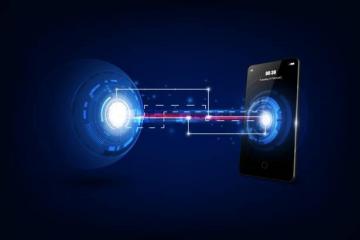
LEDs instead of halogens in regular headlights: a complete failure!
- ปัญหาเรื่องรถและการใช้งาน
-
 hikariledsite
hikariledsite
- 1
- 24 มิ.ย. 2565 20:38
- 178.210.223.***
LEDs instead of halogens in regular headlights: a complete failure!
Modern LED sources (hikari led hb3 9005) of light are dramatically different from their predecessors, studded with crystals on all sides. But is it possible to install such "lamps" instead of halogen ones in the headlights of cars? We check for professional suitability the LEDs of five models.
In the era of Zeus and Hercules, every earthly day began with the fact that the goddess of the morning dawn Eos went to heaven. She was carried by two immortal horses - Phaethon and... Lamp. Note that there was definitely no horse named LED on Olympus. However, mankind decided to abandon incandescent lamps and gas-discharge analogues in favor of more economical and durable semiconductor light sources. Today, they are installed in the head lighting of even relatively inexpensive cars.
Improving visibility: a few simple techniques
Down with halogens!
Automotive LEDs at the beginning of their career spoiled their reputation: the secondary market was littered with a frank "leftist". As a rule, the light source for head optics was a dozen dead LEDs that shone in different directions - the correct light distribution was not worth dreaming of. However, soon there was a product Hikari LED headlight, in which narrow strips of LEDs exactlycorresponded to the location of the filament in a conventional light bulb. And soon similar in design semiconductor light sources began to be produced by many Chinese manufactories.
Actually, you can't install LEDs in headlights homologated for halogens, and we've written about it more than once. But Eastern manufacturers persistently write on the packaging of their products H4 or H7! Illegally? Of course. But let's leave the legal side of the issue for now. Our main task is to test LEDs for professional suitability. To this end, we purchased five kits for installation in headlights designed to work with H4 lamps. Please note, that all purchased LEDs are capable of operating at voltages of both 12 V and 24 V. This suggests , that they use high-quality power stabilization units - the so-called drivers.
The differences between a lamp trying to be correct (top photo) and a completely unsuitable one: in the correct lamp there are separate lines of LEDs for high and low beam. These rulers are similar in size and location to an incandescent spiral in a conventional lamp. In the correct lamp there is a screen covering the lower hemisphere of the luminous element of the low beam. In addition, the correct lamp is equipped with a driver that allows you to work at a voltage of 12-24 V, as well as a cooling radiator.
Regloscope listens
Let's start with a simple check - maybe it will be over. We go to the service station to an old friend of the magazine Anatoly Vaisman to test the LEDs directly on the car. As a carrier, we took the popular Kia Rio. This car was also chosen because when replacing the bulbs, you do not need to disassemble half the car. . By the way, many put LEDs instead of halogens solely in order to change the lamps less often, because on some cars this operation is laborious (for example, you have to remove the bumper) and, accordingly, expensive.
How to use the lights of the car
The master of the car service drives the car to the site and installs a regloscope in front of the headlight - such a device checks the lighting equipment at a mandatory technical inspection. Let's start with the standard halogen lamp. Everything is normal! Now let's see what light distribution the luminous semiconductors will give.
Three products out of five failed: instead of an exemplary "tick" on the screen, something resembling a UFO from a television horror story appeared. But two subjects - Philips LED headlight and G7 Head light conversion kit - gave an acceptable picture. And if during the inspection the inspection inspector does not carefully look through the transparent cap of the headlight, which lamp is installed in it, then, in theory, he should not have any complaints. In addition, in headlights with a diffuser or lensed optics, it will not be possible to see the bulb from the outside! In general, the probability of slipping through the inspection is very high.
It turns out that some LEDs can still (at least from a technical point of view) be installed in the headlights? To obtain accurate confirmation, we turned to the "highest court" - the testing center of STC AE LLC, where we conducted control tests of LED sources for compliance with the requirements of UNECE Regulation No. 112-00 regarding the passing beam.
Source: https://hikariled.org/


07 ต.ค. 2565